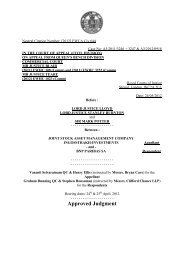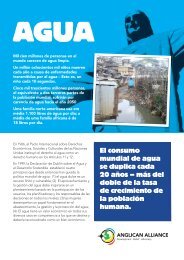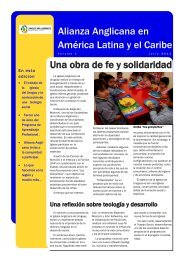measured outcomes for students, with youngpeople themselves as key informants and/orcollaborators in this process.In contrast, a person-centred, democraticapproach to education presumes quite differentintentions and processes, which include a moregenerously conceived account of process andoutcomes. It is also an approach which submitseverything that goes on in the school to themost important educational question of all: Howdo we become good persons who lead goodlives together? Student voice is important here,not so much through representative structures(though it will have these and operate themwell), but rather through a whole range of dailyopportunities in which young people can listenand be listened to, make decisions and take ashared responsibility for both the here-and-nowof daily encounter and for the creation of a betterfuture.At a communal level, the main concern is howbest to co-create, with adults and other youngpeople, a good society, a democratic fellowshipand a better world. My reaffirmation of democraticfellowship is deliberate. It is central to a numberof key socialist writers to whom we are now,rightly, returning (e.g. William Morris, G.D.H.Cole, R.H. Tawney and John Macmurray), tocommunitarian anarchism (e.g. Peter Kropotkin)and to participatory traditions of democracy.Fellowship is a very old, foundationally importantnotion, and if it is appropriately linked to thevalues of democracy it energises and names thecrucial synergy between justice and care. It insistson the essential link between the political andthe personal, between how we go about makingdecisions and forming judgements about thecommon good while attending and celebratingthe lived diversity of those actual persons whoseaspirations and fulfillment is both the point ofpolitics and the means of its realisation.Patterns of partnershipThe impressive range of student voice activityalluded to earlier has much within it that deservessubstantial support, providing it is guided byemancipatory values and motivations that makeclear the nature of the power relations andthe orientation of the dispositions and intentionsinvolved. Building on the work of activistwriters like Roger Hart 1 and Harry Shier, 2 I havedeveloped a typology – ‘Patterns of partnership:how adults listen to and learn with students inschools’ – that is mindful of these considerations,rooted in the complexities and specificitiesof school-based contexts and explicitly insistenton participatory democracy as a legitimate andincreasingly urgent aspiration. Within both thestate or publicly funded and the private sectors ofeducation, participatory traditions have alwaysbeen in the minority. Yet, it seems to me thatpioneers like Alex Bloom in Stepney, London, 3and researchers like Lawrence Kohlberg, whopioneered the Just Community School movementin the USA in the 1970s, are correct in theirinsistence that ‘the educational aim of full individualhuman development can be reached onlythrough an education for full participation insociety or in a human community’ 4 and that it isthe duty of schools themselves to strive towardstheir own development as fully democratic institutionswithin the participatory tradition. Why?Because representative democracy privilegesthose who are already politically mature. InKohlberg’s view, unless young people experienceparticipatory engagement in a rich way at school,when they leave they are likely to avoid opportunitiesfor participation and public responsibility,not seek them. For him, and for me:The most basic way in which the high school canpromote experiences of civic participation is togovern itself through a process of participatorydemocracy… The only way school can help graduatingstudents become persons who can makesociety a just community is to let them try experimentallyto make the school themselves. 5There is one other matter that seems to meimportant in all this and it concerns the inadequaciesof developing an account of collaborativeways of working, of patterns of partnership,which frames its concerns purely as powerrelations and wider contexts of social justice.Issues of power, rights and justice are of foundationalimportance, but they are not enough.Justice is never enough: it is a necessary butnot a sufficient condition of human flourishing.Justice, and indeed any form of politics, is for thesake of something else, for the sake of creative1 Roger Hart, Children’sParticipation: From Tokenism toCitizenship, UNICEF, InternationalChild Development Centre, 1992.2 Harry Shier, ‘Pathways toparticipation: openings, opportunitiesand Obligations’, Children andSociety, 2001, 15(2), pp.107–17.3 See Michael Fielding, ‘AlexBloom: pioneer of radical stateeducation’, Forum, 2005, 47(2–3),pp.119–34; and Michael Fieldingand Peter Moss, Radical Educationand the Common School: ADemocratic Alternative, Routledge,2011.4 Lawrence Kohlberg, ‘Highschool democracy and educatingfor a just society’, in R. Mosher(ed.), Moral Education: A FirstGeneration of Research andDevelopment, Praeger, 1980, p.34.5 Ibid., p.35.Education for the good society | 35
and joyful relations between persons. Thus, inaddition to undergirding a collaborative typologywith overt reference to power there is also a needto include explicit reference to relationships,dispositions and orientations to each other aspersons. Hence my revival of the notion of democraticfellowship.The six-fold typology presented in Table 7.1is thus not just about power relations, importantas these are. It is also about our encountersas persons within two very different orientingcontexts – what I have called ‘the instrumentaldimension’ typified by high performanceschooling through market accountability andthe ‘fellowship dimension’ typified by personcentrededucation for democratic fellowship.With the possible exception of Pattern 6, allof the patterns of partnership can be approachedfrom either an instrumental or a fellowshipstandpoint, or indeed from any other standpoint. 6For example, on the one hand, a joint projectinvolving different groups or classes providingmutual critique can be approached atomisticallywith prime emphasis being placed on individualskills acquisition, team work as a saleable CVcommodity, and a competitive ethos re-enforcingthe virtues of extrinsic motivation and the cutand thrust of the marketplace. On the otherhand, it can be approached in a spirit of criticalfriendship, with prime emphasis being placed onindividual learning within the context of overtreciprocity, collegial work within a communalnexus, and emulative striving within the contextof an inclusive, emergent common good. Thecrucial point to make here is that it matters whichone chooses, whether deliberately or by default:it matters for our desire and capacity to flourishas persons; it shapes and limits our learning, andit enables or prohibits the kind of democraticsociety we aspire to.Schools for democracyEach generation has a duty to re-imagine andremake democracy and to do so not only withregard to contemporary challenges, but also in thelight of its multiple histories. Which genealogywe chose is crucial, for in the fabric of thetradition to which we give our allegiance is wovenTable 7.1 Patterns of partnership – how adults listen to and learn with students in school6 See Michael Fielding, ‘Patternsof partnership: student voice,intergenerational learning anddemocratic fellowship’, in NicoleMocker and Judyth Sachs (eds),Rethinking Educational PracticeThrough Reflexive Research: Essaysin Honour of Susan Groundwater-Smith, Springer, 2011, forthcoming,for detailed practicalexamples.InstrumentaldimensionHigh performanceschoolingthrough marketaccountabilityPatterns of partnership6. Intergenerational learning as lived democracy:• shared commitment to and responsibility forthe common good5. Students as joint authors:• students and staff decide a joint course ofaction together4. Students as knowledge creators:• students take lead roles with active staffsupport3. Students as co-enquirers:• staff take a lead role with high-profile, activestudent support2. Students as active respondents:• staff invite student dialogue and discussion todeepen learning and professional decisions1. Students as data source:• staff use information about student progressand well-beingFellowshipdimensionPerson-centrededucation fordemocratic fellowship36 | www.compassonline.org.uk
- Page 1 and 2: Educationfor theGoodSocietyThe valu
- Page 3 and 4: Acknowledgements:Compass would like
- Page 5 and 6: ContributorsLisa Nandy is Labour MP
- Page 7 and 8: IntroductionEducation for the Good
- Page 9 and 10: 1 This article has been developedou
- Page 11 and 12: 8 See Ann Hodgson, Ken Spoursand Ma
- Page 13 and 14: 13 The most comprehensiverecent res
- Page 15 and 16: 1 See for example B. Simon, ‘Cane
- Page 17 and 18: 10 J. Martin, Making Socialists: Ma
- Page 19 and 20: the poorest homes (as measured by e
- Page 21 and 22: 1 In 2008, 15 per cent ofacademies
- Page 23 and 24: 1 Angela McRobbie, The Aftermathof
- Page 25 and 26: 8 Christine Skelton, Schooling theB
- Page 27 and 28: 1 See www.education.gov.uk/b0065507
- Page 29 and 30: 13 Barbara Fredrickson, ‘Therole
- Page 31 and 32: 6. Education forsustainabilityTeres
- Page 33 and 34: well as cognitively. Real understan
- Page 35: 7. Schools fordemocracyMichael Fiel
- Page 39 and 40: 8 Wilfred Carr and AnthonyHartnett,
- Page 41 and 42: 1 Winston Churchill, quoted inNIACE
- Page 43 and 44: 9 See http://news.bbc.co.uk/1/hi/ed
- Page 45 and 46: 1 The Learning Age: A Renaissancefo
- Page 47 and 48: nities, and not have the public-pri
- Page 49 and 50: 4 Engineering flexibility: a system
- Page 51 and 52: other countries to require their re
- Page 53 and 54: 6. Remember that many of the outcom
- Page 55 and 56: 2 Adrian Elliott, State SchoolsSinc
- Page 57 and 58: 4 Peter Hyman, ‘Fear on the front
- Page 59 and 60: 12. Rethinking thecomprehensive ide
- Page 61 and 62: training, be part of a local system
- Page 64: About CompassCompass is the democra



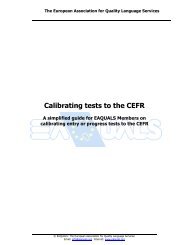
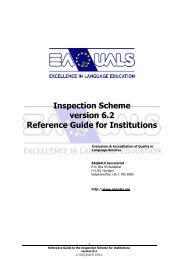
![[2012] UKUT 399 (TCC)](https://img.yumpu.com/51352289/1/184x260/2012-ukut-399-tcc.jpg?quality=85)

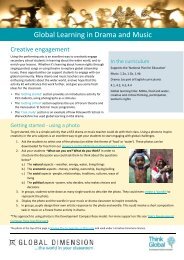
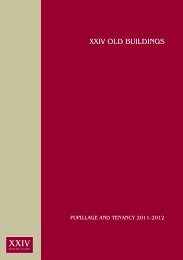
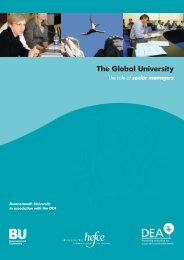
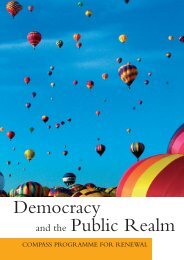
![Neutral Citation Number: [2009] EWHC 3198 (Ch) Case No: CH ...](https://img.yumpu.com/50120201/1/184x260/neutral-citation-number-2009-ewhc-3198-ch-case-no-ch-.jpg?quality=85)
